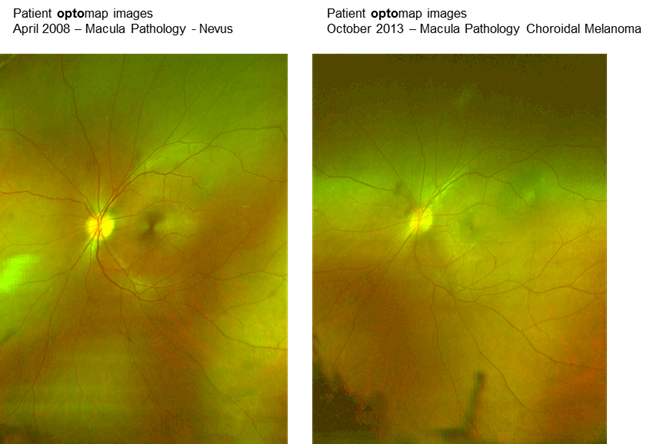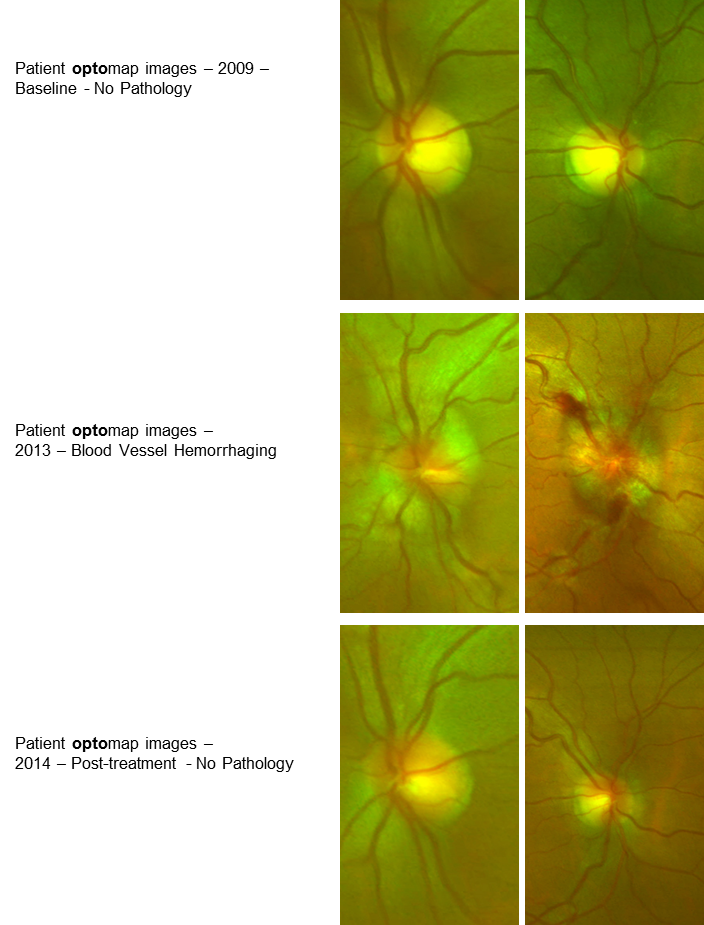Denise Kniefel, OD knows the value of the optomap exam because she has been a customer of Optos since 2004. No stranger to the technology, Dr. Kniefel started imaging her retina as a matter of course. In 2008 at a tradeshow, she stopped in to talk to the representatives from the company. Optos had recently unveiled new technology that allowed for even better optomap imaging than in the past. Dr. Kniefel sat down and had her retinal image captured. A nevus was detected that she hadn’t previously seen.
The image prompted Dr. Kniefel to see her ophthalmologist and have a fluorescein angiography and an OCT exam done. She did indeed have a nevus, which is essentially a freckle in the eye, and needs to be routinely monitored. Just like a freckle on your skin, it can change and become cancerous. Her doctor told her if the nevus did change into cancerous melanoma of eye, she would notice changes to her vision.
Denise continued to image herself every six months using the optomap, and in 2013, she noticed that the nevus looked different but she was not experiencing any vision loss. She went back to her retinal specialist who told her the nevus was now presenting as a very small choroidal melanoma. Dr. Kniefel went to Evangelos Gragoudas, MD at Massachusetts Eye and Ear Infirmary in December of 2013 for proton beam radiation. Because it is so soon after her treatment, her prognosis is unclear. However, because of the optomap technology, the cancer was caught at an extremely early stage, the best case scenario for a positive outcome.
Only 6 out of a million people are diagnosed with choroidal melanoma (cancer of the eye) and most of those go undetected until they are large. Due to her own experience, she is a strong supporter of the optomap technology and recommends it to all of her patients and within her own personal community. She is convinced that the optomap exams that she was using to track changes in her nevus enabled her to get world-class treatment for her melanoma before it could have been detected by a typical dilation fundus exam.





